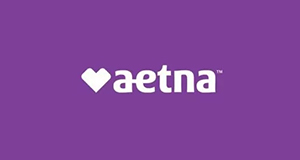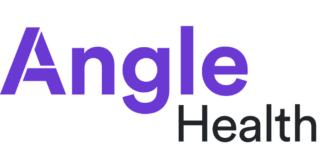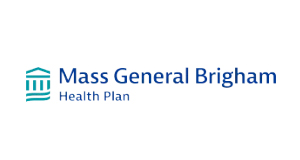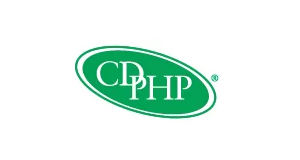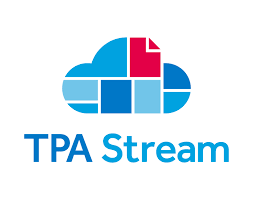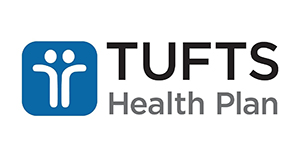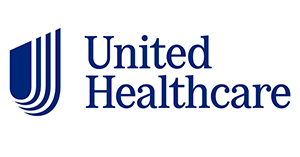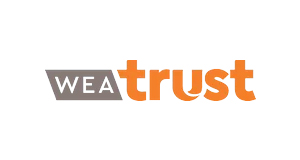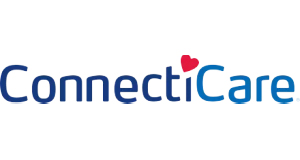
The Best Ways to Help Clients Manage Group Insurance Costs
Table of Contents
Employers find it important to provide a comprehensive benefits package to attract and retain employees. As an insurance broker, you must make this easier for employers by reducing the costs as much as possible. Group health insurance plans are an effective way to lower employee insurance costs, and you can reduce the price further with certain strategies. This guide explores how group health insurance works, 10 methods for reducing insurance costs and ways to build a stronger relationship with your clients in the process.
What Is a Group Health Insurance Plan?
Group health insurance is a type of medical insurance policy that covers the particular health needs of a group of members, such as company employees or members of a particular profession. Group health insurance plans typically cost less than individual health plans because the health insurer's risk is spread across a large group of health plan members.
Some policies even allow members to extend their coverage to people directly or indirectly related to them. For example, when becoming a group health insurance member, employees may add their spouse, children and other dependents to the policy.
How Group Health Insurance Works
An employer or company typically purchases group health insurance and then offers it to employees or organization members. This insurance plan may also only be valid if there is a minimum of 70% participation from group members.
Plans vary based on coverage types, insurers, costs, terms and conditions. After a company chooses a plan, group members can either accept or decline the offer. Some plans may come in tiers, allowing members to select their preferred coverage type. For example, they could pick the basic coverage or a more advanced option with add-ons.
Advantages of Group Health Insurance Plans
Group medical coverage can benefit employers and employees in various ways. This makes these plans an excellent asset for brokers to offer employers. Some of its benefits include:
- Lower premiums: Because employers will essentially be buying insurance in bulk, the insurance is cheaper than individual insurance, which requires insurers to reimburse each individual medical cost.
- Tax benefits: Group insurance is tax-deductible because money spent on premiums for employees may count as a business expense.
- Better employee retention: With a good group health insurance plan, employees understand that the company values their well-being, making them want to continue working with the company.
10 Strategies to Manage and Reduce Group Insurance Costs
Your clients will want group medical coverage for the low costs. To secure the best deal for employers, you need to understand the various strategies and solutions you can use and inform your client about implementing the best policies to lower costs. Here are 10 ways to help clients manage group insurance costs.
1. Choose a Plan With Higher Deductibles and Health Savings Accounts
High-deductible health plans (HDHPs) allow employers to reduce upfront premium costs, offering lower monthly paycheck deductions for employees. You can help your clients implement a quality HDHP by offering health savings accounts (HSAs). This allows employees to pay certain medical expenses with pre-tax dollars.
Employers can also provide training to educate workers about their tax-free and retirement advantages when using HSAs. Additionally, implementing Medical Expense Reimbursement Plans (MERP) can help them combine and offer multi-line benefits like hospitalization, urgent care and mental health coverage at a lower cost.
2. Implement a Preventative Wellness Program
According to statistics, more than 50% of U.S. businesses offer employee wellness programs. Wellness programs promote healthier practices for employees to follow. Group insurance companies feel that businesses that encourage healthier lifestyles reduce the chances of severe health issues that could have been prevented. This enables them to charge lower premiums because there is less risk.
Preventative wellness plans may include non-smoking meetings, flu shots, cancer screening, behavioral or lifestyle coaching, weight management programs, and mental health phone lines. Since various wellness plans are available, encourage your clients to survey their employees to understand their core needs and desires. This will help them choose a program that workers want to participate in.
3. Choose a Plan With Maximum Out-of-Pocket Requirements
Clients can manage group insurance costs by setting up the policy so employees pay the highest amount of out-of-pocket care costs possible. Depending on the plan, employees may only receive coverage for medical costs that exceed that amount. This coverage may exclude out-of-network care, monthly premiums and other services specifically excluded from the insurance plan.
Sometimes, your client's employees may need to pay the maximum out-of-pocket amount before these plans cover prescription medications and doctor's visits. These plans can lower an employer's business expenses on employee insurance policies.
4. Leverage Technology and Tools for Better Choices
As your client's broker, one of the best ways to help them choose the best plan is by reviewing and comparing group insurance plans from different companies. The law requires group health insurance plans to disclose their costs and rates for services and covered items. Fortunately, certain tools and technologies help you easily compare numerous plans, evaluate the full market and acquire accurate quotes for each plan.
Some platforms offer a more comprehensive view. For example, you can search for providers that offer insurance with the hospitals and medical groups your clients want, get customized side-by-side comparisons of rates and benefits, and receive notifications when certain plan packages may only be sold separately.
5. Exclude Vision and Dental Coverage
One of the simplest ways to lower costs is by reducing the scope of the coverage. For instance, if your client notices their employees have few vision claims, excluding vision coverage can decrease costs. It may be best to confirm with workers first since employees may prefer insurance that covers dental and vision issues. Still, many companies exclude this coverage, so it may come as less of a surprise to your client's employees.
6. Look at Utilization Rates
Particularly when working with smaller businesses, it's important to remember that every dollar counts for them — most companies would rather spend on core business processes and needs than employee health insurance. They would appreciate it if you lowered insurance costs as much as possible.
When beginning to work with them, research your clients' industries and look at the major risks associated with their work and daily lives. Based on these insights, search for trends in what your clients are actually using to give them improved services and costs. During renewals, analyze their usage again and adjust their coverage accordingly. For example, a high ER usage rate might warrant better care access or create an opportunity for lower-cost alternatives like urgent care.
7. Offer Voluntary Benefits
When employers offer certain coverage as voluntary benefits, employees can choose it if they like and pay for that benefit themselves. Voluntary benefits allow employers to add value to the insurance coverage, make the plan more attractive to employees and reduce employer costs at the same time.
Some voluntary benefits your client could add include vision, dental, life, hospital indemnity, short- and long-term disability, and accident coverage. The employer may even offer to share the cost with workers to make things easier for employees.
8. Hire More Employees
If your client can support the growth, hiring more workers can mean lower premiums. Having more employees often means a lower average utilization rate. Lower utilization rates often make the company look better to insurance providers, allowing your clients to receive lower healthcare service rates. A larger group also reduces the insurer's risk, so they're more likely to offer favorable rates. Small businesses with fewer than 10 employees can join together and create one larger association to benefit from group insurance.
9. Incorporate a Healthy Work/Life Balance
A healthy work/life balance is essential for preventing negative impacts on an employee's mental and physical health. Supporting a healthy lifestyle for workers can help your clients reduce healthcare costs. If your client takes proactive steps in helping their employees maintain their good health, insurance providers may see the company as a responsible organization that poses fewer risks.
Encourage your clients to address the work/life balance by implementing workshops or meetings about managing stress and preventing burnout. They can also find better ways to support in-office, remote and hybrid workers with improved strategies, exercise programs and ergonomic work furniture and equipment.
10. Improve Employee Healthcare Education
Another way to lower insurance costs is by educating employees about their healthcare plans. Workers may be obligated to pay for certain aspects of their benefits, too. By educating them on how to lower costs, employers may be able to reduce insurance costs as a whole.
Advise your clients to teach their employees how to reduce costs by reviewing medical bills for any errors and encouraging them to visit urgent care centers instead of emergency rooms.
Insurance Sales Strategies for Building Strong Client Relationships
Communication is key to ensuring your insurance sales strategies get through to clients. Here are a few practices you can use to suggest the strategies above to employers and ensure a smooth negotiation process.
1. Keep Open Lines of Communication
Use multi-channel communications to show your clients you are ready to support and assist them whenever needed. This can include connecting with them through various platforms like email, phone calls, a mobile broker app or messaging apps. If you have an app or portal for your clients, you may even send out automated reminders to employers that you're available for any questions and check-ups.
It may also help to use simpler language rather than industry jargon when discussing buying insurance and improving costs. This ensures your clients fully understand how to navigate insurance processes and the various practices they can implement to lower costs.
2. Communicate to Employers About Health Plan Offerings
Showing clients you're looking out for them can significantly impact your client relationships. You can show your clients you care by offering employers unique solutions to mental health and well-being issues. Suggest conducting surveys for employees to understand where they need support most or implementing a workshop for more prominent health issues.
You can also go over the health plan with your client in detail, explaining everything it includes and excludes and the different ways they might be able to reduce insurance costs while still getting the most out of their healthcare plan. Doing so allows you to create trust with clients because you're doing your best to get them the best deal possible.
3. Unify Core Goals
Establish your client's core goals and values to ensure you get them a group medical plan that meets their needs. Spend time really listening to their concerns and values. For example, is efficiency a pain point for them? Do they need synced renewal dates? Make sure the policies you present support the issues their employees face, and ask if there's a particular budget their insurance plan should meet.
Shape your strategy around their mission to ensure your goals are aligned. This reassures your clients that your main priority is finding them a well-suited policy.
4. Promote Transparency
Provide your clients with the tools and resources they need to fully communicate the scope of health benefits. This can help employees navigate their options more easily and prevent underutilization, which often occurs when workers understand very little about their benefits. Workers' lack of understanding can sometimes make them dissatisfied with the company's insurance plan.
As a broker, you can help employers and offer solutions like live webinars, registration walk-throughs, quick-read one-sheets, and virtual or in-person lunch and learns. These events allow employees to ask questions and gain better knowledge about their coverage. You can also reiterate being one phone call or email away to let your clients know their staff is a priority.
Why You Should Partner With The Difference Card
Partnering with the right healthcare solutions provider can help you largely impact your clients' insurance savings and boost your client retention rate. The Difference Card is a company dedicated to helping brokers reduce healthcare costs for their clients. We help you do so while retaining the desired benefits or gaining even better health benefits.
With over 20 years in the business, we have a deep understanding of the different industries, which helps us develop unique plan designs and solutions. Our comprehensive suite of products include:
Cost-Containment Solutions:
- Medical Expense Reimbursement Plans (MERP): This partially self-funded plan combines benefits like emergency room, surgery and mental health coverage, helping employers reduce costs by 18%.
- The Difference Guarantee: This product provides financial stability and peace of mind for an employer or group, while allowing them to maintain the best benefits possible for their employees.
Benefit Administration Services
- Health Savings Accounts (HSA): These accounts offer employees triple tax advantages and top-tier investment options.
- Health Reimbursement Arrangements (HRA): This employer-funded account contains a fixed annual amount members can use to fund their healthcare expenses.
- Flexible Spending Accounts (FSA): These accounts allow members to pay for medical expenses with pre-tax dollars.
Improve Group Health Insurance Costs With The Difference Card
If you're looking to improve your cost-reducing approaches, grow your agency and retain your clients, The Difference Card has knowledgeable experts who are ready to assist you in securing the ideal insurance carrier.
We'll assign you and your client a dedicated account manager with specialized industry expertise while offering flexibility in customizing employee benefits and limiting claim exposure. We also have an easy-to-use mobile app and member portal for fast and easy support. We welcome you to request a proposal with us today!


